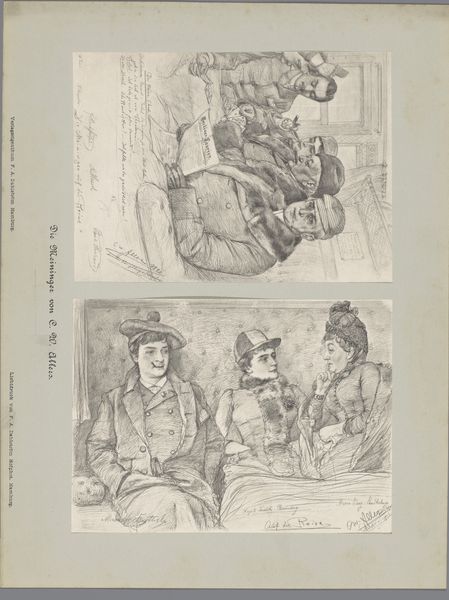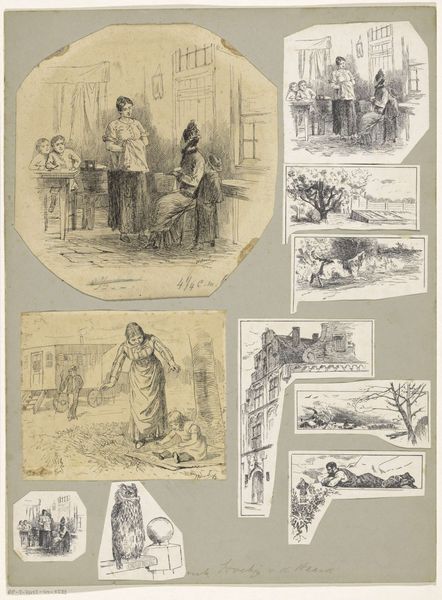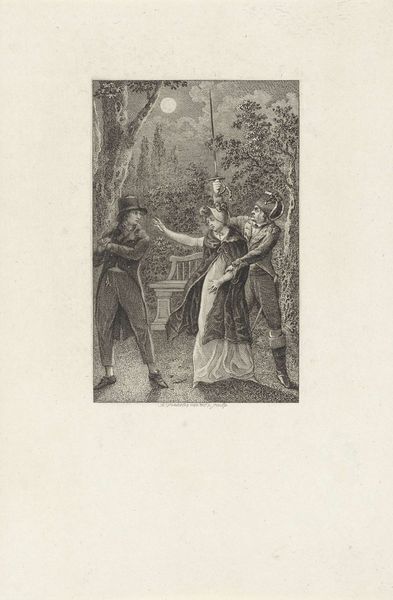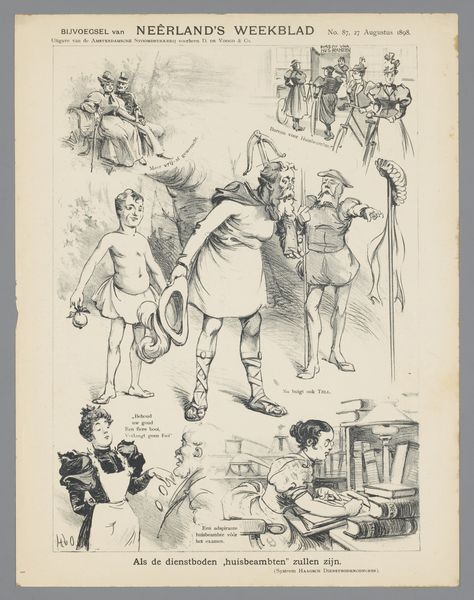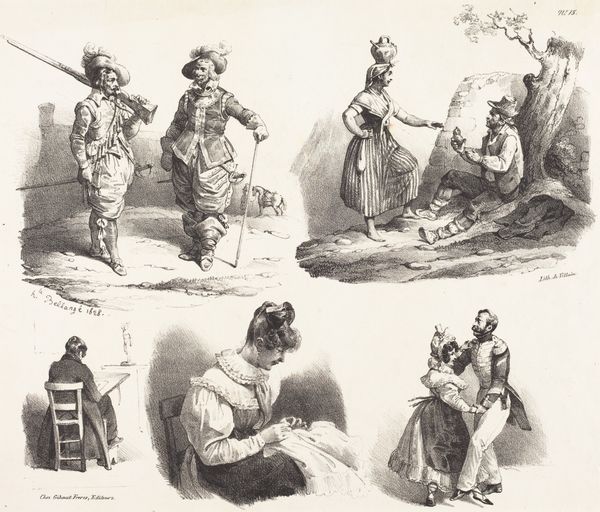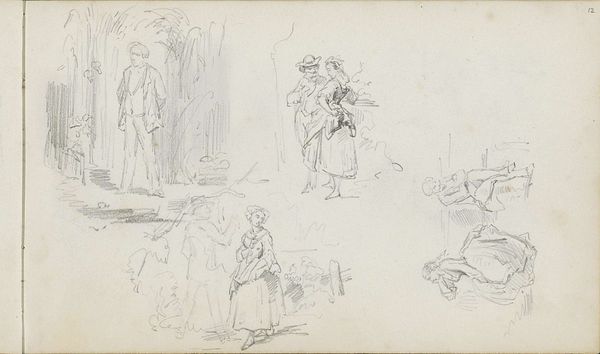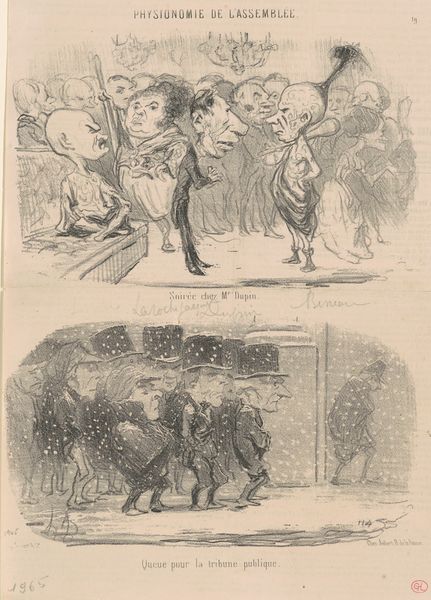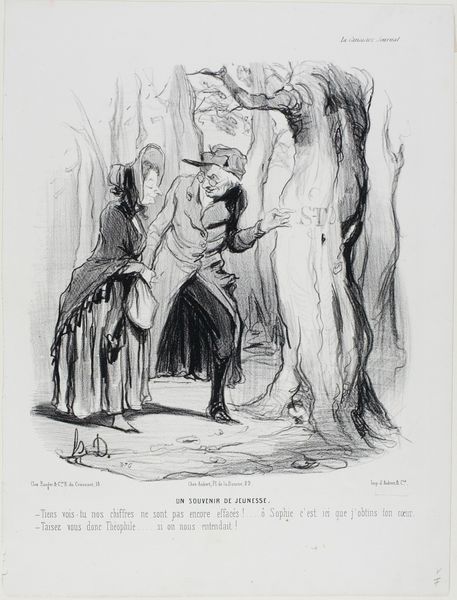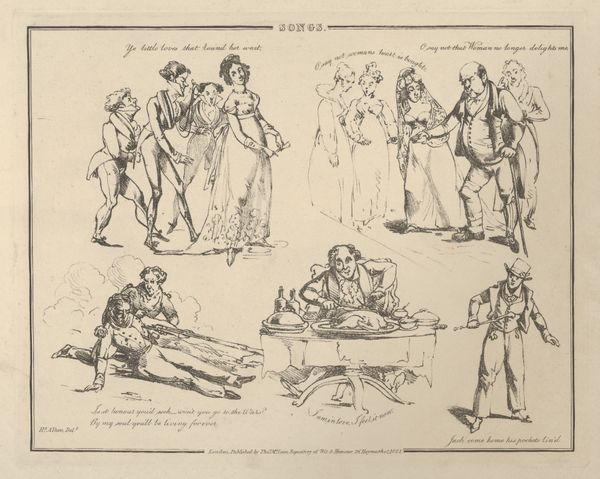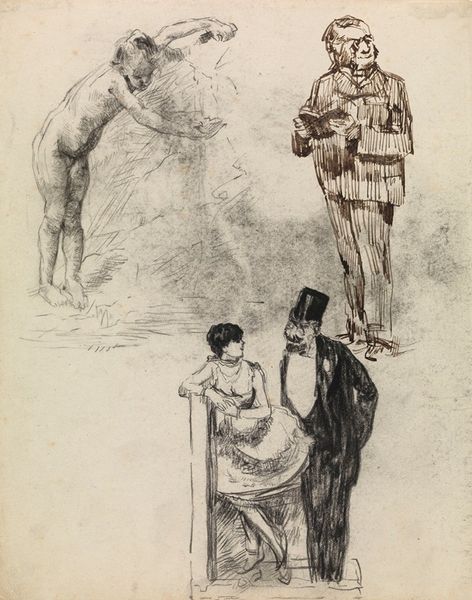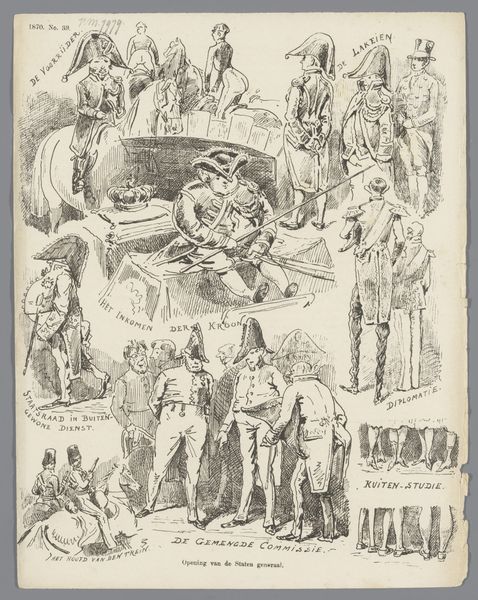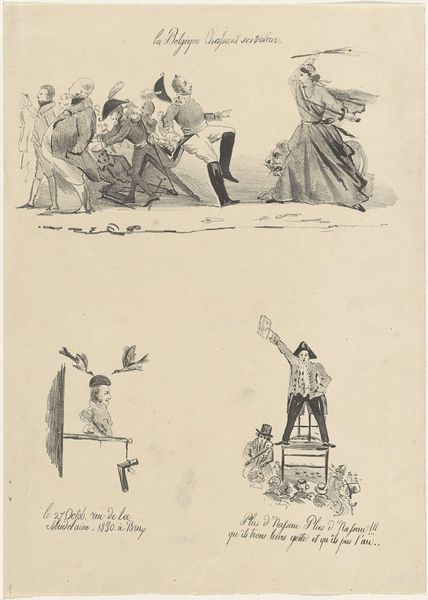
Copyright: Public Domain: Artvee
Curator: James Ensor's pencil drawing, "Figures," created between 1880 and 1883, presents a series of loosely rendered characters occupying the same pictorial space. Editor: There's a theatrical, almost dreamlike quality to this composition. It feels fragmented, raw... as if capturing fleeting moments or perhaps subconscious thoughts. Curator: Exactly. Ensor was deeply involved with Symbolism. His figures often function as archetypes, drawn from social observation but amplified through imagination and sometimes caricature. Note how several of these characters are costumed. Editor: The presence of masks, of theatrical dress… definitely infers performance, masquerade. Given Ensor’s historical context, could this be a reflection of the societal tensions, the performance of class and identity, that was building in Belgium at the time? There’s a man collapsing near the bottom; is he overcome by the masquerade? Curator: I see the figure falling as representing the overwhelming sensation of facing reality in the modern era, when one strips off the many masks. There are at least five clusters of figures on the sheet and you notice immediately, how they vary with distinct gestures and expressions. What is consistent is the light source coming down at a diagonal from the upper-left, causing the figures on the upper-right and lower-left to be more obscure, but the collapse and a woman in profile to be bathed in direct light. Editor: That positioning does create an interesting power dynamic through implied visibility. Also, look at the style – it’s like a rapid sketch, revealing the artist’s process and emphasizing spontaneity. You feel his urgency to capture these images and their emotional weight, which is interesting, given its style is so heavily inspired by Romanticism. Curator: Absolutely. And Romanticism allowed for dramatic exploration of feeling, particularly in response to a rapidly changing world. His utilization of Symbolism helped in portraying how he felt about his contemporary social change. The artist would later explore a very distinctive method, by way of oil paintings and etchings, however, in its embryonic stage, as it were, the drawings reveal what would ultimately form the bedrock of a later symbolic construction, and provide valuable insights to the modern day into understanding societal angst and change. Editor: It's fascinating how a simple pencil sketch can encapsulate so much complexity. Ensor used these Figures to reveal the cultural and emotional shifts of his time. Curator: A true testament to the power of art as a symbolic window onto the soul of an era.
Comments
No comments
Be the first to comment and join the conversation on the ultimate creative platform.

